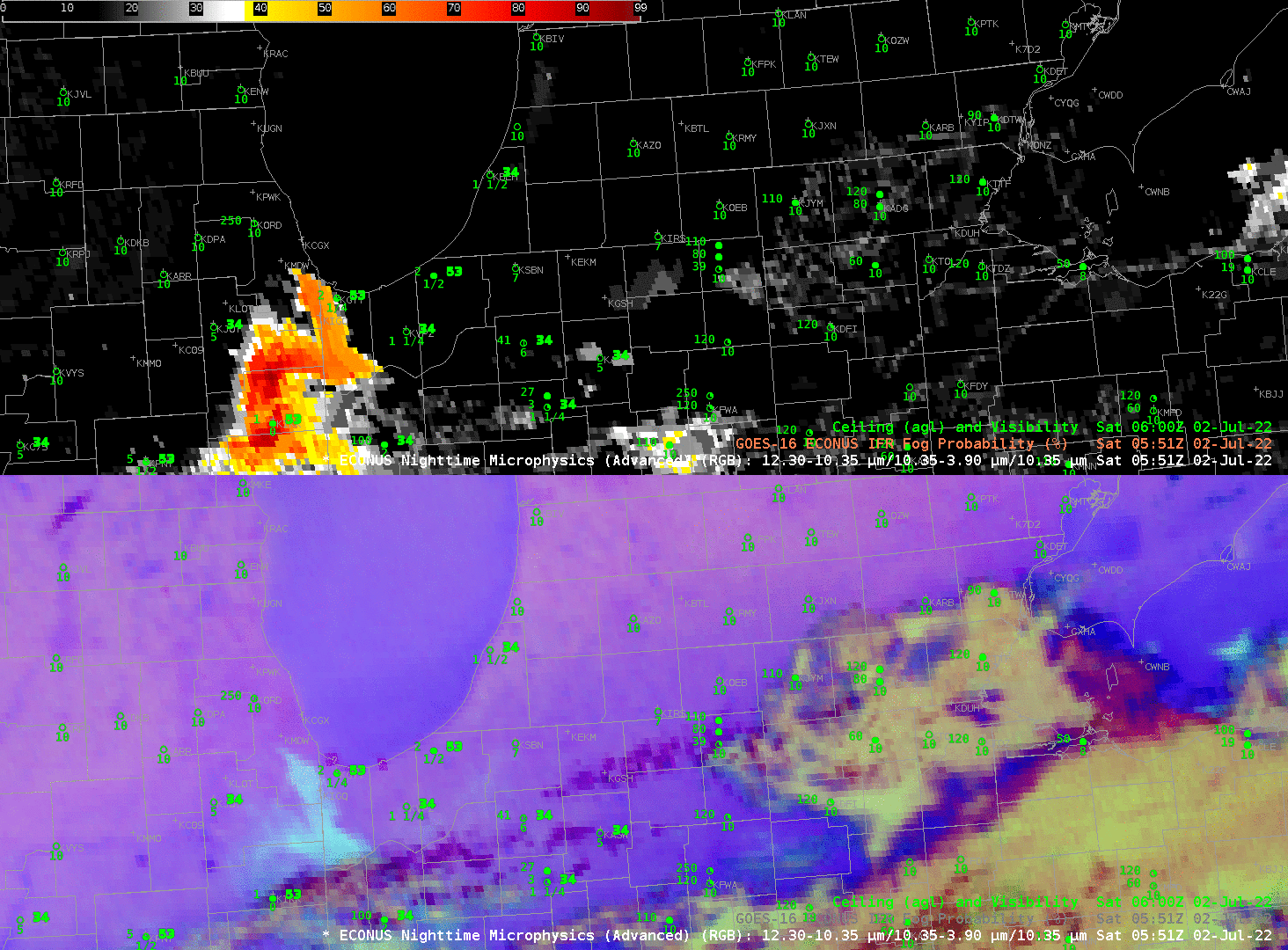Fog over southwestern lower Michigan

From today’s inbox: This morning was interesting because I saw very little indication in the vis channel or microphysics RGBs to indicate fog was present over far SW Lower MI this morning. Any thoughts why? When fog is difficult to view in satellite imagery, as on 2 July 2022, it’s usually because the fog is very thin (but even a very thin fog can cause transportation issues). It might also be that thin cirrus is obscuring the satellite view of low-level fog. The animation above shows some indication of high cirrus (as purple features). Note however, that IFR Probability fields (on top) do highlight a region over southern lower Michigan near station KIRS (Kirsch, MI, near Sturgis). This is, however, after the station there started to report IFR conditions — but before a signal appeared in the Night Microphysics RGB. In cases when satellite detection might not identify fog, numerical prediction fields (such as those used in the computation of IFR Probability) can give a forecaster an earlier alert on the presence of fog.
The animation below, from the CIMSS CSPP Geosphere site, shows the region through sunrise. The low clouds burn off quickly after sunrise, reinforcing the idea that they were very thin.
Thanks to TJ Turnage, WFO Grand Rapids, for the alert about this challenging case. When satellite detection isn’t working, webcams and surface observations still do. Some imagery in this post was created using the NOAA/TOWR-S Cloud instance of AWIPS.

